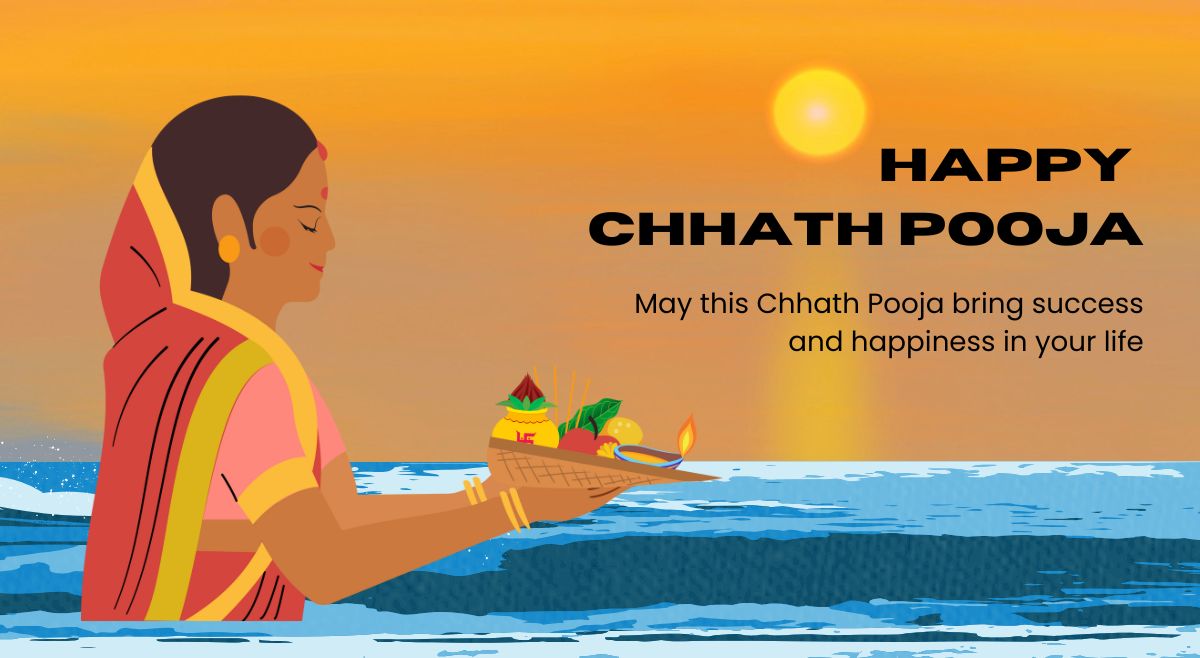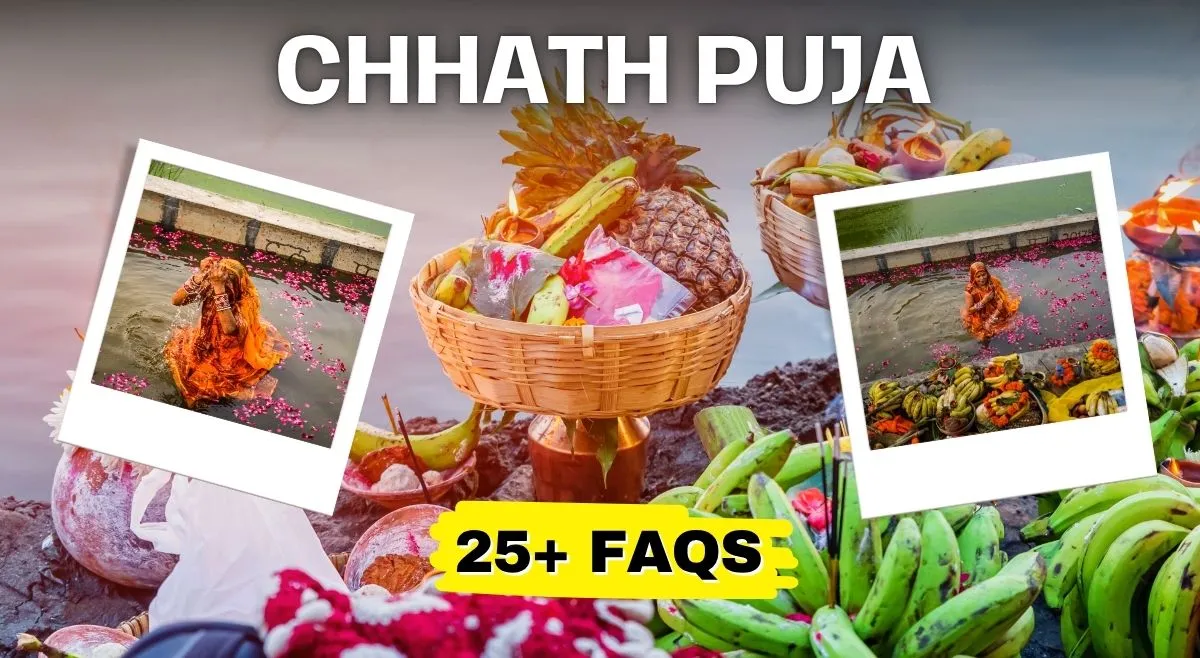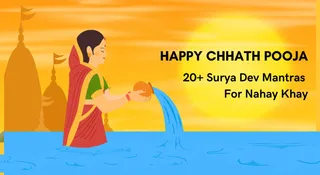- By Ridam Sharma
- Mon, 27 Oct 2025 06:00 AM (IST)
- Source:JND
Chhath Puja FAQs: Chhath Puja is one of the most sacred Hindu festivals, celebrated mostly in Bihar, Jharkhand and Uttar Pradesh and also in some parts of Nepal. It is a four-day festival that is devoted to the worship of the Sun God (Surya) and Chhathi Maiya. The festival is believed to bring divine blessings of health, long life, and success to the family. The festival is all about utmost devotion, rituals of honouring nature and community bonding along the river banks. Chhath Puja is a devotional and cultural tradition which is deeply rooted in ancient Vedic practices and local folklore. The festival is full of emotions of gratefulness, purity, as well as respect for nature.
To learn more about this culturally rooted festival, here is a list of more than 25 commonly asked questions about Chhath Puja 2025, from its history and significance to rituals and much more.
List Of 25+ FAQs About Chhath Puja:
1. What is Chhath Puja?
Chhath Puja is a Hindu festival, dedicated to the worship of Lord Surya Dev (the Sun god) and Chhathi Maiya for the well-being of the family, prosperity and health.
2. When does Chhath Puja take place?
It is often observed between October and November, six days after Diwali. This year, Chhath will be celebrated from October 25th to 28th.
3. Where is Chhath Puja celebrated?
Chhath festival is famous in Bihar, Jharkhand, Eastern Uttar Pradesh and Nepal and is also celebrated by Indian communities across the world.
4. Who can perform Chhath Puja?
Chhath can be performed by anyone, irrespective of sex, caste or age.
5. How many days is Chhath Puja celebrated?
Chhath Puja is celebrated for four days, and each day marks an important ritual of the festival, like Nahay Khay, Kharna, Sandhya Arghya, and Usha Arghya.
6. What is done on Nahay Khay (Day 1)?
It is a day of spiritual purification. Devotees take a ritual bath, clean their home and eat a sattvik meal.
7. What happens on Kharna (Day 2)?
A 36-hour fast nirjala vrat (no food, no water fast) is observed. It is broken after sunset with prasad (sacred food) like jaggery, kheer and fruits.
8. What is Sandhya Arghya (Day 3)?
Worshippers gather near the water bodies to pray and offer prasad (sacred food) to the setting sun.

9. What is Usha Arghya (Day 4)?
The final prayers and offerings are made to the rising sun, after which the fast is broken, and prasad (sacred food) is distributed among all devotees.
10. What is the significance of the sun in Chhath Puja?
The Sun God is a symbol of health, wealth and peace. Worshipping him is believed to bring divine blessings and healing.
11. Is Chhath Puja eco-friendly?
Yes, worshippers avoid using chemicals, artificial colours or idols during the festival. Most of the items used are natural and biodegradable.
12. What prasad is made during Chhath
Thekua, which is a sweet wheat flour cookie, kheer, fruits and other seasonal produce are part of the main offerings.
13. What do devotees wear during Chhath Puja?
Sarees are worn by women and are usually in yellow, red or orange colours. Men wear dhoti-kurta. Notably, devotees believe in wearing clean and new clothes on the sacred occasion.
14. What should not be done during Chhath Puja?
No salty or non-vegetarian food should be eaten or touched while preparing prasad. Additionally, worshippers avoid wearing dirty clothes, along with drinking and smoking.
15. Is the Chhath Puja celebrated outside India?
Yes, Indian communities celebrate Chhath Puja in countries like the USA, UK, Australia, Mauritius and others.
16. What are the popular languages of Chhath Puja songs?
Folk songs are primarily sung in Maithili and Bhojpur during rituals by families and communities.
17. Who is Chhathi Maiya?
Chhathi Maiya is believed to be the sister of God Surya Dev and is worshipped as a protective deity for the health and prosperity of children.
18. Is it compulsory to perform Chhath Puja on riverbanks?
Ideally, yes. However, when that is not possible, followers can use water tanks, ponds or even water from the Ganga at home.
19. What are the health benefits of Chhath Puja?
Rituals like fasting, taking a bath, worshipping the Sun God and other such rituals are believed to cleanse the body and mind.
20. Why is the Chhath Puja fast considered difficult?
The observers go through a 36-hour nirjala vrat, which needs spiritual endurance as devotees do not eat or drink water throughout this period.
21. Can onions and garlic be used during Chhath Puja?
Only sattvik food that is pure vegetarian with no onion/garlic should be eaten during the Chhath festival.
22. What happens to Prasad once Chhath Puja is over?
Prasad is distributed among family, neighbours and guests after the final Usha Arghya.
23. Can children eat prasad before the festival ends?
No. Prasad and puja fruits are not to be consumed or touched by any person, including children, until the festival is over.
24. What is a soop, and what is it used for?
The Soop is a basket made of bamboo, which is packed with prasad and offerings that are taken by women to water banks during rituals of Chhath Puja.
Recommended For You
25. What should be remembered while preparing prasad?
Maintain purity, cleanliness and reverence. Wash hands, do not touch anything with dirty hands and do not taste prasad when making it.
Happy Chhath 2025
26. Before Usha Arghya, can anybody break the fast?
The observers are required to go through the entire fast and then break it after the last morning offering.
The above-mentioned questions cover all aspects of Chhath Puja, from historical to cultural and symbolic. The festival is regarded as the best example of devotion and discipline towards nature. When the rituals end with heartfelt prayers and after the prasad is distributed, the devotees carry a message of gratitude, togetherness, and faith in their hearts. Whether celebrated on riverbanks or in homes, the age-old tradition of Chhath Puja has only one purpose, and that is to bring families and communities together and to reestablish the religious connection between human beings and nature.





